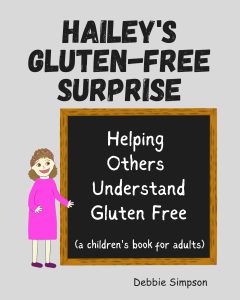This page may contain Amazon affiliate links.
Far Too Many Are Living With Undiagnosed Celiac
What the heck does undiagnosed celiac have to do with tight shoes?
Well, let’s just see.
(This really has nothing to do with shoes, by the way…….or feet.)
Mom! My Feet Hurt!
Imagine the following scenario:
Your child complains that his feet hurt. He cries and limps, so you take him to the doctor. The pediatrician sends you to a pediatric podiatrist. The pediatric podiatrist examines and manipulates both feet but finds nothing wrong. He prescribes an anti-inflammatory.
No relief.
More pain pills. Nothing.
The crying continues.
Tests, Doctors, And More Tests
A few weeks later, your child’s limp becomes more pronounced. He starts to complain that his knees, and sometimes hips, hurt. Your once easy-going child is now acting out. He’s unhappy and miserable and his behavior reflects this greatly.
You visit another doctor.
She orders x-rays.
The x-rays exhibit no indication of any structural problems.
Doctor After Doctor
You go to another doctor.
He suggests physical therapy.
Another physician suggests a behavior therapist.
By now, your child doesn’t want to go to school. You start to notice that his school work is declining. Your frustration level is increasing. You just want an answer.
This is your child, a person you love with your whole heart and soul. You’d do anything to relieve his misery.
You take him to yet another physician.
Up until now, your child has had to have his shoes off as he waited for the physician to arrive. This doctor, however, asked to see your child with his shoes on.
He inspects your child’s feet and then asks him to walk across the room.
His words are simply, “Your child’s shoes are too small.”
Does This Sound Familiar?
Of course, this is a silly scenario. Parents would surely have this mystery solved way before it got this far. But for SO, so, SO many, this is what it is like when it comes to getting a celiac diagnosis.
It often takes years to finally have a doctor suggest, “Let’s test for celiac.” Too often, patients are made to feel that their health issues are all in their heads.
I got up every morning and put on my pair of shoes that were too small for my feet (so to speak). I ate my bowl of bran cereal, having no idea I was causing the start of my daily decline. I never made that connection–but neither did the doctors.
Undiagnosed Celiac Because Symptoms Are Overlooked
Symptoms related to undiagnosed celiac are often over-looked — and not just for a week or for months. Symptoms are often misdiagnosed and left untreated for years.
For me, it was decades, continuously consuming foods that caused my body to attack itself, leaving me undernourished.
Removing gluten was like putting on a comfy pair of slippers after spending the day in shoes that pinch and scrunch. I wore that pair of tight shoes for my first forty years.
Passion From Experience
So this is where my passion comes from. My passion for awareness is out of a lifetime of just needing a different pair of shoes (a different diet). As that person who lived a childhood with undiagnosed celiac, I wish testing was more common—maybe even routine.
It makes me beyond sad to know there are thousands and thousands (and thousands and thousands) being affected by undiagnosed celiac but don’t know it. And it makes me sad to know that there are even more being affected by someone they love who is living with undiagnosed celiac (as my family was when it came to me).





